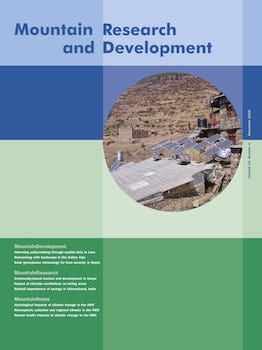Tropical Montane Cloud Forests: Science for Conservation and Management, edited by L. A. Bruijnzeel, F. A. Scatena, and L. S. Hamilton. Cambridge, United Kingdom: Cambridge University Press, 2010. xxvii + 740 pp. £65.00; U$113.00. ISBN 978-0-521-76035-5.
Few people would question the ecological and socioeconomic importance of tropical cloud forests, so it is a pleasure to discover a new book dedicated to their conservation and management. In fact, the cloud forest cause has been diligently promoted by a dedicated community of researchers and conservationists over the past couple of decades and produced a series of notable publications in the process. What does this new publication bring to the feast? The first thing that strikes you is its size; at more than 700 pages, this is not light reading in any sense. In the immortal words of Laurie Anderson, it really is thick enough to stun an ox. Perhaps this is testament to the amount of research that is now being devoted to this exceptionally important forest type. The book is presented in a high standard throughout, with a visually attractive design and ample illustrations (although not in color).
The text is divided into 72 chapters, organized into 7 sections, a structure that arises from the book's genesis as the proceedings of a conference held in 2004. These sections include assessments of regional floristic and animal diversity, hydrometeorology, nutrient dynamics, water use, climate impacts, and conservation management. It is a shame that these proceedings have taken so long to appear in print, because, inevitably, some of the information presented is a little out of date, in spite of the best efforts of the editors to refresh the text. Despite its size, the book's coverage is incomplete; for example, there is little here on autecology or on conservation genetics, although there have been significant research advances in these areas in recent years. The focus of the text is very much on ecosystem ecology and particularly on hydrology. This is perhaps not surprising, because the original symposium was cosponsored by UNESCO's International Hydrology Programme.
One of the book's main contributions is to provide a valuable overview of the results of a series of major research programs into the hydrology of cloud forests that were undertaken approximately a decade ago. Many readers will be familiar with the seminal work on this theme by L. A. Bruijnzeel, who is the senior editor of this volume, and clearly deserves a great deal of credit for the herculean efforts required to bring this book into being. As he is a coauthor of one-fourth of the chapters as well as a coeditor of all sections, this is very much a Bruijnzeelian overview. The book, consequently, has undoubted value in providing an introduction to this body of work, but arguably it suffers from its symposium format. With so many concise accounts of individual case studies, the effect induced in the reader is more akin to overindulging on canapés than eating a satisfying main course. Given the all-encompassing nature of the title, the reader might legitimately have expected far greater focus on synthesis. Nevertheless, much useful and interesting information is presented here, for example, on the influence of fog and the potential impacts of climate change on cloud forests. Evidence that cloud forests are slow to recover from disturbance and are relatively costly to restore, although unsurprising, provides further justification for strengthening conservation efforts in the future.
Despite the ample evidence provided of the significant progress in research that has been achieved over the past 20 years, it is also striking how much remains to be discovered. Even issues of such crucial importance as the hydrological consequences of cloud forest loss or the impacts of climate change on biodiversity remain highly uncertain. By identifying such knowledge gaps, this book provides a valuable platform on which to base future research, and certainly no one active in cloud forest research can afford to be without a copy. It is to be hoped that the key messages of this important volume will find their way into the hearts and minds of those involved in cloud forest conservation and management, but they may need to be presented in a more digestible format if they are to be widely consumed.





